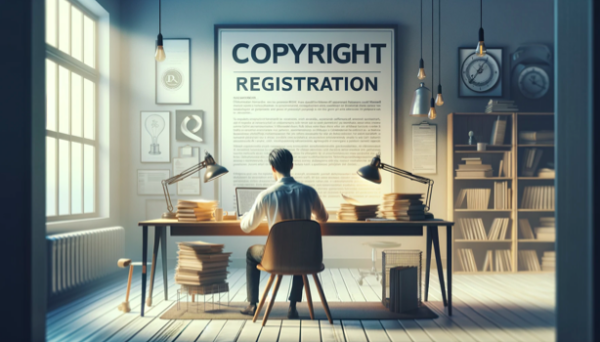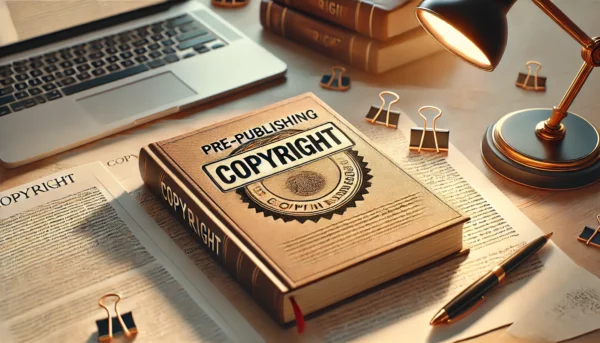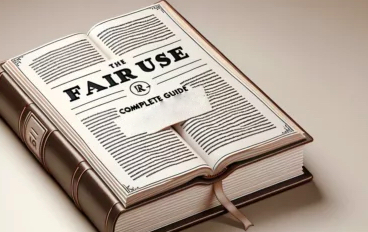Amazon has revolutionized the way authors reach their audiences by providing a powerful platform for self-publishing. Through Amazon’s Kindle Direct Publishing (KDP), writers can bypass traditional publishing barriers, gaining direct access to a global market. This democratization of publishing has opened new opportunities for authors, allowing them to retain greater control over their work’s pricing, marketing, and distribution. However, with this increased control comes a crucial responsibility—the need to understand and manage the copyrights associated with their written works.
Copyright is a legal concept that grants the creator of original work exclusive rights to its use and distribution, typically for the author’s lifetime plus 70 years. In the realm of publishing, it protects authors against unauthorized reproduction, distribution, and sale of their books, ensuring they can reap the benefits of their labor. For any author looking to publish with an Amazon KDP copyright or any other platform, a clear grasp of copyright laws is essential not only for protecting their work but also for navigating the complexities of digital and print publishing landscapes effectively. This understanding forms the foundation of a successful and legally compliant authorial career.
Understanding Your Rights in the Context of Amazon Publishing Copyright
Copyright is a form of intellectual property law that provides exclusive rights to the creators of original works of authorship, including literary, dramatic, musical, artistic works, and certain other intellectual goods. Essentially, it is designed to protect the creator’s investment in their creativity by granting them the exclusive right to reproduce, distribute, perform, display, or license their work, and to prohibit others from doing the same without consent. This legal protection ensures that authors can control how their content is used and are compensated for their efforts, thereby encouraging continued creativity and investment in intellectual endeavors.
When it comes to the Amazon publishing copyright, the role of copyright becomes particularly significant. Amazon’s Kindle Direct Publishing (KDP) platform allows authors to self-publish their works in both digital and print formats, offering them broad reach and control over pricing, marketing, and royalties. This level of control means that understanding copyright laws is crucial for self-publishers, especially in the context of digital book distribution on Amazon. When an author publishes a digital book through Amazon, they maintain the copyright of their works, which means they hold exclusive rights to their creation. This is pivotal because it enables authors to manage how their books are sold, who can distribute them, and how they can be read — for example, through print sales, Kindle downloads, or audiobook formats.
Furthermore, copyright plays a critical role in defining the relationship between authors and Amazon. By publishing through KDP, authors agree to certain terms of service, which dictate how Amazon can distribute their works. While authors retain their copyrights, they grant Amazon extensive rights, including the right to reproduce, distribute, and display the books. Authors must understand these terms to ensure they are not inadvertently giving away more rights than intended.
For authors, the relevance of understanding Amazon’s specific copyright terms cannot be understated. It influences key decisions around book formats, and exclusivity options such as enrolling in KDP Select, which requires 90-day exclusivity, and international rights. Authors need to balance the benefits of wide distribution and potential increased visibility on Amazon with the need to protect their copyright and control the distribution of their work.
In the realm of Amazon publishing, copyright is not just a legal requirement but a strategic asset. It empowers authors to navigate the publishing landscape, protecting their work and optimizing its commercial potential while ensuring compliance with the platform’s policies. Understanding these nuances is essential for anyone looking to publish on one of the world’s most influential digital publishing platforms.
Your Publishing Journey Awaits – Start NowThe Legal Landscape of Books with Amazon Publishing Copyright
Copyright laws provide the backbone of legal protection for authors across the globe. These laws are primarily designed to secure and reward the intellectual labor of creators by granting them a set of exclusive rights. Typically, these rights include the ability to control the reproduction, distribution, public display, and adaptation of their works. For books, this means that authors can dictate how their works are reproduced, whether in physical or digital form and who may sell or distribute them. These rights are automatically bestowed upon the creation of a work that is fixed in a tangible form of expression, such as a manuscript or digital file.
Understanding specific terms within copyright law is crucial for authors to effectively manage and protect their works. Copyright registration is one such term, referring to the process of recording the copyright with a governmental entity, like the U.S. Copyright Office. While copyright automatically exists from the moment of creation, registering copyright solidifies the legal claim by making it a public record, which is particularly beneficial in enforcement actions.
Copyright infringement occurs when someone uses a copyrighted work without permission in a way that violates one or more of the rights granted to the copyright holder. This can range from unauthorized reproduction to distribution of copies. Infringement can lead to legal battles where the original copyright holder must prove that their rights were violated. The outcome can significantly impact an author’s control over their work and potential earnings.
Statutory damages are a form of compensation that a court can award in copyright infringement cases, which do not require the copyright holder to prove actual financial loss. These damages are predetermined amounts that can be significant, intended to punish infringers and deter future violations. The prospect of statutory damages serves as a critical deterrent against the unauthorized use of copyrighted materials.
For authors, navigating the legal landscape of copyrights is fundamental not only to protect their creative investments but also to understand the full extent of their rights and the mechanisms available to enforce them.
Intellectual Property and Your Rights as an Author
Intellectual property (IP) in the context of book publishing encompasses a range of creations of the mind for which an author can claim ownership and exclusive rights. These rights are primarily categorized under copyrights, which cover literary works such as novels, poetry, textbooks, reference works, and other written compositions. In addition to the text itself, IP rights can also apply to supplementary materials included in a book, such as illustrations, cover art, maps, and photographs, provided they are original and have been fixed in a tangible medium.
Understanding the scope of intellectual property laws is essential for authors as these laws provide the legal framework that protects their creative outputs. By default, authors own the copyright to their works as soon as they are fixed in a tangible form—that is, written down or otherwise recorded in a way that it can be perceived, reproduced, or otherwise communicated for more than a transient duration. This automatic protection affords authors the exclusive right to use, distribute, and sell their works. They can also license these rights to others, such as publishers or filmmakers, often in exchange for royalties or other forms of compensation.
Moreover, intellectual property laws empower authors to control the use of their work in specific ways, which is crucial in the digital age where content can be easily copied and disseminated across the globe within seconds. For example, these laws enable authors to set terms for how their books are distributed, whether in print or as e-books, and they can take legal action against unauthorized reproductions or derivative works that may dilute their original content’s value.
However, these protections are not absolute. Exceptions such as fair use in the United States, or fair dealing in other jurisdictions, allow limited use of copyrighted material without permission for purposes such as criticism, news reporting, teaching, and research, under certain conditions. Thus, while intellectual property laws significantly bolster an author’s control over their creative works, they also balance this by allowing for reasonable use that contributes to cultural, educational, or informational enrichment.
In sum, understanding intellectual property rights is not just about protecting one’s work—it’s also about understanding the limits of these rights and the ways they can be managed to maximize an author’s reach and impact while safeguarding their original contributions against exploitation.
Public Domain and Publishing Rights with Amazon Publishing Copyright
Public domain works are those creative materials that are not protected by intellectual property laws because their copyright has expired, been forfeited, or is otherwise inapplicable. Essentially, these works are considered public property and can be used by anyone without obtaining permission from a copyright holder. Classic literary works by authors like Jane Austen and Mark Twain are prominent examples of texts that have entered the public domain, allowing anyone to reproduce, adapt, or distribute them freely.
The implications of publishing public domain material on platforms like Amazon are manifold and can present unique opportunities as well as challenges. For authors and publishers, public domain content can be repurposed or adapted into new works, such as modern retellings, annotated editions, or collections that are then sold on Amazon’s vast marketplace. This process can provide a cost-effective way to produce new books since the base material does not require a licensing fee or royalty payments.
However, while the text of public domain works themselves are free to use, the way they are presented—such as in the form of a new book or as part of a collection—can itself be subject to copyright if sufficient originality is added in the form of commentary, illustrations, or critical analysis. Therefore, publishers must create enough new content to distinguish their version of the public domain work from others to claim copyright over the new elements they have introduced.
Furthermore, authors who are considering the use of public domain content on platforms like Amazon must be aware of the crowded nature of the market. Many versions of popular public domain works already exist, which can make standing out more challenging. Proper marketing and unique additions to the text can be crucial in capturing the interest of readers navigating through numerous options.
Necessary Steps to Protect Your Publishing Rights
Before diving into the bustling world of self-publishing, authors must take critical steps to ensure that their publishing rights are securely protected. This foundational work not only safeguards their intellectual property but also maximizes the potential earnings and control over the distribution of their creative outputs.
1. Understand Your Rights: The first step is to thoroughly understand the rights you hold over your work. This includes knowing how copyrights work, what rights they confer (such as reproduction, distribution, and public display), and how they can be transferred or licensed. Familiarity with copyright law is essential to ensure that you maintain control over how your book is used and sold. It’s also crucial to manage your KDP account carefully to ensure your publishing rights are validated correctly on Amazon, including documentation for rights reversion, format rights, territory rights, and maintaining only one KDP account at a time for validation purposes.
2. Copyright Registration: Although copyright protection is automatic upon the creation of a work in a tangible medium, registering your copyright with the appropriate governmental body, like the U.S. Copyright Office, provides a public record of your claim and is highly advisable. This is particularly useful in the case of disputes or litigation, as it offers a presumption of ownership and access to statutory damages.
3. Draft Clear Contracts and Agreements: When collaborating with others, such as co-authors, illustrators, or publishers, it is vital to draft clear, written contracts that specify the rights and responsibilities of each party. These agreements should detail the scope of rights being licensed or transferred, any royalties or payments, and the duration of the agreement.
4. Secure Permissions for Additional Content: If your book includes content not created by you—such as images, quotations from copyrighted texts, or cover art—it is crucial to obtain the necessary permissions from the copyright holders. This step cannot be overlooked, as failing to secure proper permissions can lead to legal challenges and potential financial liabilities.
5. Use Copyright Notices: Place a copyright notice on your book to inform others that the work is protected and that you hold the copyrights. This should include the copyright symbol (©), the year of publication, and the name of the copyright owner.
6. Monitor and Enforce Your Rights: Once your book is published, keep an eye on how it is being used. Utilizing tools and services that scan for copyright infringements can help you monitor unauthorized distributions. If you find that someone is using your work without permission, be prepared to enforce your rights through cease-and-desist letters or legal action if necessary.
By following these steps, authors can ensure that their publishing rights are well-protected, paving the way for a successful and legally secure publishing journey. Whether through traditional publishing avenues or self-publishing platforms like Amazon, securing your intellectual property is paramount to maintaining the integrity and profitability of your creative work.
Crafting the Copyright Page for Your Book
The copyright page, often found on the reverse side of the title page in a book, is a crucial element for protecting your intellectual property rights. It serves not only as a formal declaration of copyright but also provides essential information that can aid in the legal protection and management of your work. Here are the key steps and elements to include to create an effective copyright page:
1. Copyright Notice: This is the core element of the copyright page and includes the copyright symbol (©), the year of publication, and the copyright owner’s name. For example, “© 2024 by [Author Name]. All rights reserved.” If you prefer, you can use the phrase “All rights reserved” to explicitly denote that no part of the book may be reproduced or used in any manner without written permission, except in the case of brief quotations embodied in critical articles or reviews.
2. Edition Information: If your book is in multiple editions, specify the edition of the book. This information helps in tracking changes and updates over time.
3. ISBN and Other Identifiers: Include the International Standard Book Number (ISBN), which is a unique identifier for books. This number is crucial for sales and distribution in the book industry.
4. Cataloging Information: Providing library cataloging data, if available, can facilitate the book’s placement in libraries and enhance discoverability.
5. Publication Information: Mention the name of the publisher, the place of publication, and the year. If you are self-publishing, you can list your own name or your company’s name as the publisher.
6. Credits for External Contributions: Acknowledge contributions from others, such as illustrators, cover designers, and editors. Permission for any copyrighted material used within your work should also be noted here.
7. Legal Disclaimers: Depending on the content of your book, you might need to include disclaimers. For example, if your book includes medical, legal, or financial advice, a disclaimer stating that the content is for informational purposes and not professional advice is prudent.
8. Contact Information: Providing a way for readers to contact you or your publisher can be useful for feedback and other professional inquiries.
This page not only asserts your rights but also provides valuable information for handling legal or bibliographic inquiries, making it an essential component of your book’s preliminary pages.
Registering Copyright with the Copyright Office
Registering a copyright with the Copyright Office, although not mandatory, is a critical step for any author looking to enforce their copyright claims effectively. The registration process formalizes the legal protection afforded to a copyrighted work and significantly enhances the owner’s ability to defend their rights in court.
Why Register?
Copyright registration provides a public record of the copyright owner’s claim. This is invaluable in establishing ownership in a legal dispute. Furthermore, registration is necessary before an infringement lawsuit can be filed in the U.S. courts. Registered copyrights also qualify for statutory damages and attorney’s fees in successful litigation, which can be a substantial deterrent against infringement.
How to Register:
1. Prepare Your Work: Ensure your work is complete and in a tangible form. For unpublished works, you can register what you have as long as it represents the final form.
2. Complete the Application: Fill out the appropriate form from the U.S. Copyright Office’s website. The office provides different forms depending on whether the work is published or unpublished.
3. Pay the Fee: There is a fee for registration, which varies depending on whether the application is filed online or on paper. Online applications are typically cheaper and are processed faster.
4. Submit Your Work: You can submit your work electronically through the Copyright Office’s electronic filing system or send in physical copies via mail. The requirement depends on the nature of the work and its publication status.
Where to Register:
Registration is completed through the U.S. Copyright Office, either via their online portal or by mailing in a paper application. The entire process can be conducted online, including payment and submission of the work.
Benefits Over Common Law Copyright:
Common law copyright automatically protects a work from the moment it is fixed in a tangible form of expression. However, without formal registration, proving ownership and claiming damages becomes more complicated and less likely to result in statutory damages. Registered copyright, by contrast, clearly establishes a date of creation and the identity of the copyright owner, making legal proceedings straightforward and more likely to result in favorable outcomes.
For authors serious about protecting their creative investment and maximizing their legal protections, registering a copyright with the Copyright Office is a wise and strategic step.
Handling Copyright Infringement and Protecting Your Work
Discovering that your work has been copied without permission can be unsettling. Knowing how to respond to such violations is crucial for protecting your rights and ensuring your creative output is safeguarded. For authors enrolled in Amazon’s Kindle Direct Publishing (KDP) Select program, it’s also important to monitor pages read to track earnings and detect potential unauthorized distributions. Here are the steps and legal options available to authors facing copyright infringement. When addressing copyright infringement issues, especially in the context of digital book distribution through Amazon, providing written notice to Amazon is necessary to formally address the situation.
1. Document the Infringement:
Begin by gathering as much evidence as possible. This includes taking screenshots, saving URLs, and documenting any other form of infringement. Establishing clear evidence is critical for proving your case, whether you seek to resolve the matter through formal legal channels or more informal negotiations.
2. Contact the Infringer:
Often, the first step is to contact the infringer directly. A cease-and-desist letter, either drafted by you or a legal professional, can be sent to the infringer. This letter should clearly state the nature of the infringement, your ownership of the copyrighted material, a demand for the immediate cessation of the infringement, and a warning of potential legal actions if the infringement does not stop.
3. Utilize Online Platforms’ Policies:
If the infringement occurs online, such as on a website or through a digital content platform, use the platform’s copyright infringement reporting system. Major platforms like Amazon, Google, and Facebook have procedures for addressing copyright claims to remove infringing content.
4. Seek Legal Advice:
Consulting with an attorney who specializes in intellectual property law can provide you with guidance tailored to your specific situation. An attorney can help you understand the strength of your case and advise on the best course of action, whether it’s negotiating a settlement or proceeding to court.
5. Consider Formal Legal Action:
If informal attempts fail, formal legal action may be necessary. This involves filing a lawsuit against the infringer for damages. Registered copyrights can significantly strengthen your case, potentially allowing you to claim statutory damages and recover attorney fees.
6. Monitor Your Work:
To prevent future infringements, consider using services that monitor the internet for unauthorized use of your work. Being proactive can help you catch infringements early and act swiftly to mitigate damages.
By understanding and utilizing these steps and legal resources, authors can effectively protect their work from unauthorized use and maintain the integrity of their intellectual property rights.
Final Thoughts
Copyright plays an indispensable role in the realm of publishing, especially on platforms like Amazon, where the ease of digital distribution can both amplify an author’s reach and increase the risk of infringement. For authors, understanding and managing copyright is not merely a legal formality; it is a critical component of their publishing strategy. It ensures that they maintain control over their creations, receive due compensation, and are able to enforce their rights against unauthorized use.
When publishing on Amazon, or any digital platform, authors must balance the protection of their rights with the accessibility of their works. While it is vital to safeguard creative outputs to ensure authors are justly rewarded, it is equally important to leverage the opportunities digital platforms offer for widespread distribution. Effective copyright management helps maintain this balance by allowing authors to exploit their works comprehensively and securely.
In conclusion, as the publishing world continues to evolve with technological advancements, authors must stay informed about their rights and the tools at their disposal to protect their intellectual property. By doing so, they can ensure their works are both widely accessible and legally protected, thereby maximizing their potential benefits in the digital age.
FAQs – Amazon Publishing Copyright
Q1: Do all books need copyrights?
Yes, all books are automatically protected by copyright as soon as they are created and fixed in a tangible form, such as written or typed text. Amazon Publishing Copyright ensures that books published through its platform comply with copyright laws, protecting the author’s rights. However, registering the copyright with the U.S. Copyright Office provides additional legal protection.
Q2: How much of a book can you copy without infringing copyright?
Under Amazon Publishing’s Copyright and general copyright laws, the “fair use” rule allows limited excerpts for purposes such as reviews, commentary, or education. However, there is no strict percentage that is universally allowed. Generally, copying more than 10% or a few hundred words of a book without permission may lead to infringement.
Q3 : What is an example of a copyright statement?
A standard Amazon Publishing Copyright statement could be:
© 2025 [Author’s Name]. All rights reserved. No part of this book may be reproduced, stored, or transmitted in any form without written permission, except for brief excerpts for reviews or educational purposes.
Q4: What is an example of how to give copyright credit?
When referencing a copyrighted work under Amazon Publishing Copyright, proper attribution is essential. Example:
“Excerpt from The Art of Writing by Jane Doe, © 2025. Used with permission from the author.”
Q5: Why would a book not have a copyright date?
Amazon Publishing Copyright recommends including a copyright date to establish ownership and rights. However, a book might not have a copyright date if:
- The author has released it into the public domain.
- It was published before 1929, meaning its copyright has expired.
- The book is self-published, and the author did not register the copyright officially.
- The publisher omitted it accidentally.
Q6:How much does it cost to copyright a book?In the U.S., the cost to register a book under Amazon Publishing Copyright through the U.S. Copyright Office typically ranges from $45 to $65 when filing online. This fee provides legal documentation of ownership, which is useful in case of disputes.benefits in the digital age.






